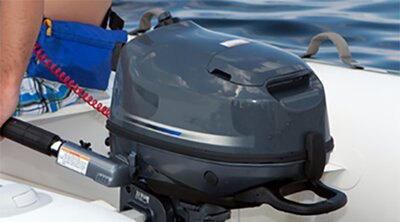Outboard Motors

The use of technology in education has allowed for more engaging and interactive learning experiences. It has enabled students to become more engaged with their studies and to gain a greater understanding of the material being taught. By incorporating technology into the classroom, educators are able to create a more stimulating atmosphere and provide learners with more opportunities to interact with the material. Additionally, technology can be used to provide a more personalized learning experience, allowing for a greater level of accessibility and creativity.
It is possible to avoid plagiarism by transforming the structure of the text while still maintaining the original context and the same semantic meaning. Making sure to keep the formatting as it is also helps to ensure that no plagiarism is present.
Size Can Be Significant
The size of an outboard motor is important to consider , as it can make a great deal of difference.
, as it can make a great deal of difference.
Be certain that the motor you select is the correct power for your boat.
Research indicates that the most typical explanation for a boater’s disappointment with their new boat is a lack of horsepower. To make sure that the motor you select is the perfect horsepower for your boat and the activities you plan to do, don’t just focus on the speed. A higher horsepower offers much more than that; it provides improved performance at intermediate speeds, a quick acceleration for pulling skiers out of the water, and usually superior stability in choppy conditions.
If you and the dealer test it out with 10 gallons of fuel, the boat may seem satisfactory; however, it could be completely inadequate when carrying the full passenger load, a cooler full of beverages, and a tank full of gas.
For optimum performance, the recommended practice is to get the maximum horsepower that your boat can handle. Not having enough horsepower can have an adverse effect on fuel consumption. Although it may seem counterintuitive, a smaller engine will typically use more fuel as it has to work harder to provide the desired performance. When it comes to carrying a 200-lb person, what would be easier: a smaller, lighter horse, or a larger, more powerful one?
Direct Fuel injection (DFI) Outboards
Fuel is injected directly into the combustion chamber and ignited by the spark plug. The fuel spray from the fuel injector is highly atomized and quickly lowers the temperature of the combustion chamber, allowing for increased engine power, low fuel consumption and low emissions. Direct fuel injection results in no fuel priming, quick engine starting, and precision engine speed and performance across the operating range of the engine. Many of today’s most sophisticated automotive engines use a combination of DFI and four-stroke designs.
Electronic Fuel Injection(EFI)
Fuel is injected into the incoming air for each cylinder, just prior to the intake valve of the engine. The fuel spray from the injector contacts the hot intake valve, cooling the valve and increases the vaporization of the fuel prior to being introduced into the combustion chamber. A spark plug then ignites the fuel air mixture. Electronic fuel injection results in no fuel priming, quick engine starting, low emissions and fuel consumption, and robust engine performance across the operating range of the engine.
Carbureted Fuel Induction
A carburetor is the most basic type of fuel induction system and is a cost effective way to control the fuel delivery to the engine. However, some modern 4-stroke outboard engines outfitted with carburetors are calibrated to meet all applicable exhaust emission standards and offer greatly improved fuel economy over older 2-stroke carbureted engines.
Automobile Engine Onboard
Marine gas engines are automotive engines modified for use on the water. Gasoline stern drive and inboard engines range in horsepower from 135 HP to over 1000 HP per engine and are used in a variety of boats
Inboard Engines
Inboard engines have the engine and transmission mounted within the hull of the boat, under the deck. A drive shaft extends through the hull and a propeller is mounted on it to drive the engine. Steering is accomplished by using a rudder.
